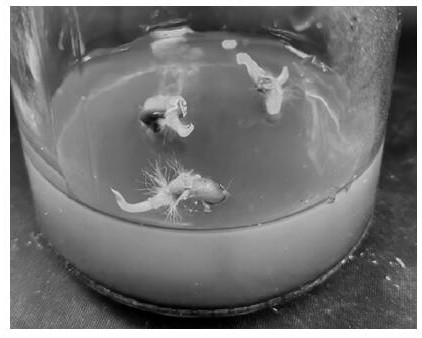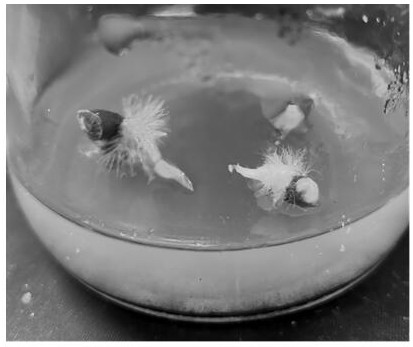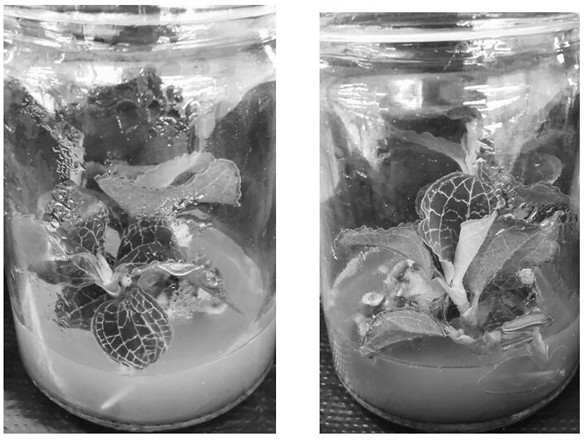Anoectochilus formosanus polyploid induction method
A polyploid, clematis technology, applied in horticultural methods, botanical equipment and methods, plant regeneration, etc., can solve problems that have not yet been reported, and achieve reduced physical injury, high induction efficiency, and improvement of low survival rate phenomenon. Effect
- Summary
- Abstract
- Description
- Claims
- Application Information
AI Technical Summary
Problems solved by technology
Method used
Image
Examples
Embodiment 1
[0031] (1) Inducer preparation: Dissolve 20 mg of amisulfuryl powder in 1 mL of dimethyl sulfoxide (DMSO) to prepare a mother solution with a concentration of 2%, and dilute the 0.002% amisulfuryl solution with purified water , sealed and stored in a refrigerator at 4°C after freeze-thaw sterilization.
[0032] (2) Pre-cultivation treatment of stem segments: select sterile test-tube seedlings with consistent growth and robust growth, cut 3-4 cm stem segments with multiple bud points in an ultra-clean workbench, and insert MS+1 mg / In the medium of L 6-BA+0.1 mg / L NAA+0.5 mg / L KT+0.5g / L AC+30g / L sucrose, pre-cultivate for 3 days until the lateral buds of the stem segment appear white bud spots. The survival rate reached 72%.
[0033] (3) Inducing agent soaking treatment: Soak the long stems that have sprouted in 0.002% amisulamide solution, place them under 23 degrees Celsius and 12 hours of light, soak for 108 hours, and shake them every 6 hours to make the material and Full...
PUM
 Login to View More
Login to View More Abstract
Description
Claims
Application Information
 Login to View More
Login to View More - R&D
- Intellectual Property
- Life Sciences
- Materials
- Tech Scout
- Unparalleled Data Quality
- Higher Quality Content
- 60% Fewer Hallucinations
Browse by: Latest US Patents, China's latest patents, Technical Efficacy Thesaurus, Application Domain, Technology Topic, Popular Technical Reports.
© 2025 PatSnap. All rights reserved.Legal|Privacy policy|Modern Slavery Act Transparency Statement|Sitemap|About US| Contact US: help@patsnap.com



